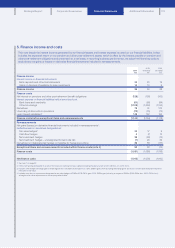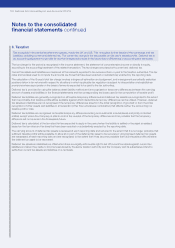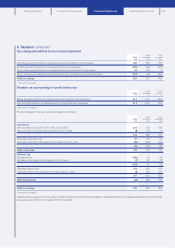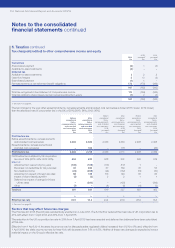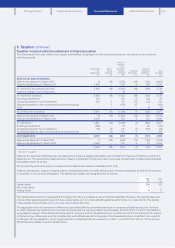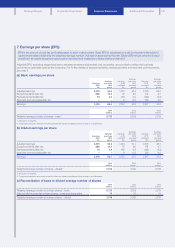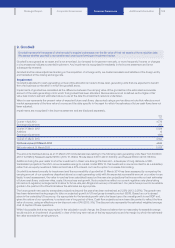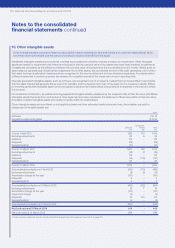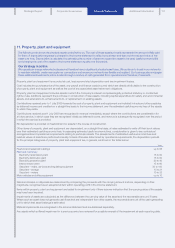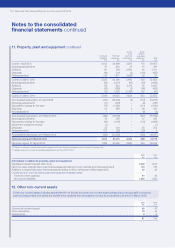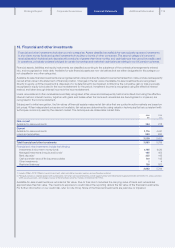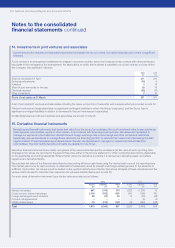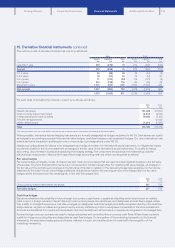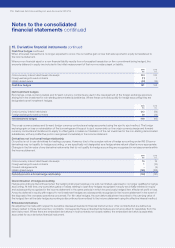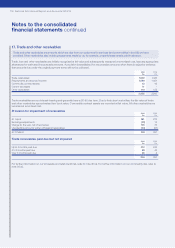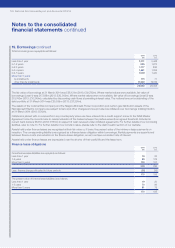National Grid 2014 Annual Report Download - page 113
Download and view the complete annual report
Please find page 113 of the 2014 National Grid annual report below. You can navigate through the pages in the report by either clicking on the pages listed below, or by using the keyword search tool below to find specific information within the annual report.
Strategic Report Corporate Governance Financial Statements Additional Information
11. Property, plant and equipment
The following note shows the physical assets controlled by us. The cost of these assets primarily represents the amount initially paid
for them. A depreciation expense is charged to the income statement to reflect annual wear and tear and the reduced value of the
asset over time. Depreciation is calculated by estimating the number of years we expect the asset to be used (useful economic life)
and charging the cost of the asset to the income statement equally over this period.
Our strategy in action
We operate an energy networks business and therefore have a significant physical asset base. We continue to invest in our networks
to maintain reliability, create new customer connections and ensure our networks are flexible and resilient. Our business plan envisages
these additional investments will be funded through a mixture of cash generated from operations and the issue of new debt.
Property, plant and equipment is recorded at cost, less accumulated depreciation and any impairment losses.
Cost includes the purchase price of the asset, any payroll and finance costs incurred which are directly attributable to the construction
ofproperty, plant and equipment as well as the cost of any associated asset retirement obligations.
Property, plant and equipment includes assets in which the Company’s interest comprises legally protected statutory or contractual
rights of use. Additions represent the purchase or construction of new assets, including capital expenditure for safety and environmental
assets, and extensions to, enhancements to, or replacement of, existing assets.
Contributions received prior to 1 July 2009 towards the cost of property, plant and equipment are included in trade and other payables
as deferred income and credited on a straight-line basis to the income statement over the estimated useful economic lives of the assets
to which they relate.
Contributions received post 1 July 2009 are recognised in revenue immediately, except where the contributions are consideration for
afuture service, in which case they are recognised initially as deferred income, and revenue is subsequently recognised over the period
in which the service is provided.
No depreciation is provided on freehold land or assets in the course of construction.
Other items of property, plant and equipment are depreciated, on a straight-line basis, at rates estimated to write off their book values
over their estimated useful economic lives. In assessing estimated useful economic lives, consideration is given to any contractual
arrangements and operational requirements relating to particular assets. The assessments of estimated useful economic lives and
residual values of assets are performed annually. Unless otherwise determined by operational requirements, the depreciation periods
forthe principal categories of property, plant and equipment are, in general, as shown in the table below:
Years
Freehold and leasehold buildings up to 65
Plant and machinery
Electricity transmission plant 15 to 60
Electricity distribution plant 15 to 60
Electricity generation plant 20 to 40
Interconnector plant 15 to 60
Gas plant – mains, services and regulating equipment 30 to 100
Gas plant – storage 15 to 21
Gas plant – meters 10 to 33
Motor vehicles and office equipment up to 10
Gains and losses on disposals are determined by comparing the proceeds with the carrying amount and are, depending on their
magnitude, recognised as an exceptional item within operating profit in the income statement.
Items within property, plant and equipment are tested for impairment only if there is some indication that the carrying value of the assets
may have been impaired.
Impairments of assets are calculated as the difference between the carrying value of the asset and the recoverable amount, if lower.
Where such an asset does not generate cash flows that are independent from other assets, the recoverable amount of the cash-generating
unit to which that asset belongs is estimated.
Material impairments are recognised in the income statement and are disclosed separately.
Any assets which suffered impairment in a previous period are reviewed for possible reversal of the impairment at each reporting date.
111


